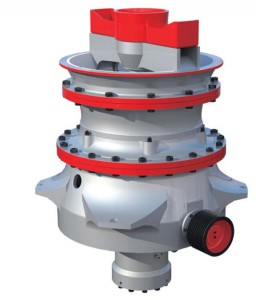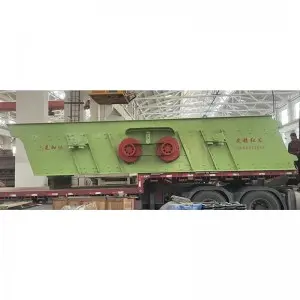In today’s globalized world, sand and gravel aggregates, as important raw materials for infrastructure construction, have a continuously growing market demand. For purchasers, planning a complete and efficient sand and gravel aggregate production line is the key to ensuring the smooth progress of the project. This article will elaborate in detail from multiple aspects on how to plan a sand and gravel aggregate production line to assist purchasers in making informed decisions.
First, clarify the demand and conduct market research
The first step in planning a production line is to clarify the requirements. This includes the determination of the production demand for sand and gravel aggregates, the requirements for product particle size and quality standards. In addition, conducting market research to understand the specific needs of the target market is also of vital importance. Market research can help determine the final use of products, thereby providing a basis for the design of production lines.
Second, the selection and evaluation of raw materials
The nature of raw materials has a direct impact on the design of production lines and the selection of equipment. The raw material properties to be evaluated include raw material size, blending, density, moisture content, mud content, compressive strength and grindability coefficient. For instance, for rocks with higher hardness, it may be necessary to select different crushing equipment and processes.
Third, crushing process and equipment selection
1. Selection of crushing methods
Select the appropriate crushing method based on the strength and grinding coefficient of the material. For instance, for materials with relatively low hardness, such as limestone, a jaw crusher or an impact crusher can be used for coarse crushing. For rocks with higher hardness, such as granite, it may be necessary to use a gyratory crusher or a cone crusher.
2. Determination of the number of crushing sections
The selection of the number of crushing sections depends on the required crushing ratio. Generally speaking, the larger the crushing ratio, the more crushing sections are required. For instance, for a production line that needs to break large rocks into fine particles, three-stage crushing might be required.
3. Selection of equipment models
Select the appropriate equipment model based on the production capacity requirements of the production line. For instance, for a production line with an annual output of 15 million tons, the unbalance coefficient needs to be considered when selecting equipment to ensure that the production line can still reach the designed output even after equipment wear and tear.

Fourth, process flow design
The process flow of the sand and gravel aggregate production line includes feeding, coarse crushing, medium crushing, fine crushing, screening and sand washing, etc. When designing the process flow, it is necessary to calculate the flow rate based on the technical parameters of the equipment to ensure the coordination among each link. For instance, the uniform feeding capacity of a vibrating feeder is crucial for the stable operation of the production line.
Fifth, civil engineering design and environmental protection measures
1. Civil engineering design
The civil engineering design of the production line needs to take into account multiple factors, including the selection of the factory site, the layout of the production workshop and the finished product storage and shipping workshop. The factory site should have good engineering geological conditions and abundant mineral resources. In addition, the design of the production workshop should take into account the space for the installation and maintenance of equipment.
2. Environmental protection measures
With the improvement of environmental protection requirements, the environmental protection design of production lines has become particularly important. Dust and noise are the main sources of pollution in sand and gravel aggregate production lines. Dust emissions can be reduced by adopting a fully enclosed design and equipping with dust removal devices. Meanwhile, for noise pollution, it can be controlled by increasing the sealing measures of equipment and adopting low-noise devices.
Sixth, layout and optimization of the production line
The layout of the production line should take into account production efficiency and flexibility. For instance, the design of multiple independent production lines enables the others to continue production when one line is shut down for maintenance. In addition, a reasonable layout can also facilitate the expansion and upgrading of the production line.
Seventh.Equipment Maintenance and Management
The maintenance and management of equipment are the keys to ensuring the long-term stable operation of the production line. Regular inspection and replacement of vulnerable parts can effectively reduce equipment failures. At the same time, establishing a complete set of equipment maintenance records and management processes helps to identify and solve problems in a timely manner.

Eighth, Intelligence and Automation
With the development of technology, the application of intelligence and automation in sand and gravel aggregate production lines is becoming increasingly widespread. The automatic control system can achieve real-time monitoring and adjustment of the production line, improving production efficiency and product quality. For instance, through an automatic control system, the automatic adjustment of the feeder and the automatic protection of the crusher can be achieved.
Ninth. Case Analysis and Experience Summary
Although this article does not provide specific cases, some successful design experiences can be referred to. For instance, a sand and gravel aggregate production line with an annual output of 15 million tons adopts a design of three independent production lines, each with a capacity of 1,600 tons per hour. This design not only enhances the flexibility of production but also ensures the continuity of the production line in the event of equipment failure.
Planning a complete sand and gravel aggregate production line requires a comprehensive consideration of multiple factors, including market demand, raw material characteristics, equipment selection, process flow design, civil engineering design, environmental protection measures, equipment maintenance and management, as well as intelligent application. Through scientific planning and design, the efficient operation of the production line can be ensured, meeting market demands while complying with environmental protection requirements. It is hoped that the content of this article can provide valuable references for purchasers when planning sand and gravel aggregate production lines.
Post time: Oct-29-2025
